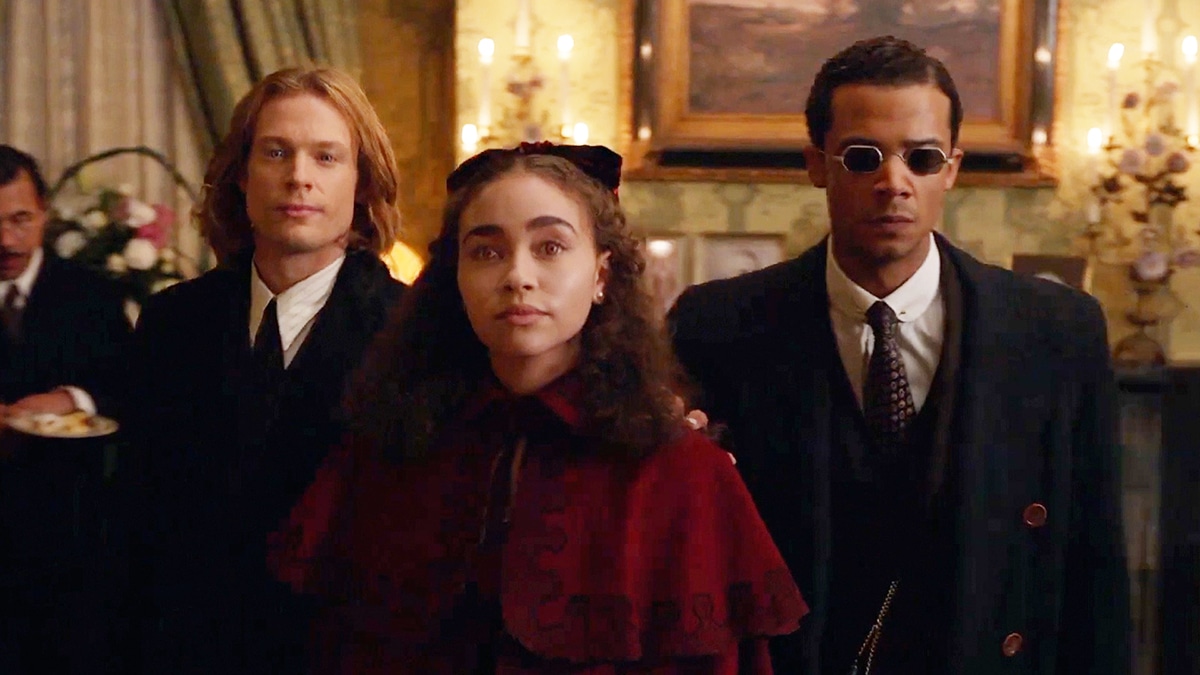Nowadays, you have to have around 50 streaming services to keep up with TV shows and films, which can mean that amazing shows like AMC+’s Interview with the Vampire do not get the full attention they deserve. Luckily, my number one TV recommendation is heading to Netflix soon. So here are my three reasons why you should start streaming beyond just the great performances, direction, and betrayals that can keep up with any telenovela. FYI, I kept major betrayal spoilers out of the below.
Subtext to Text
I watched the film Interview with the Vampire (1994) as a little girl, and the story was the same as most franchises: the horror of being a monster with pieces of humanity still in your back pocket. So when I saw a few TikTok edits introducing me to AMC’s continuation of the movie, I was shocked with how much more depth the show brought to the story because they textualize the movie’s subtext.
In season 1 of the TV show, we meet Louis de Pointe du Lac, a Black vampire recounting his life and death starting from early 1900’s New Orleans. He is turned into a vampire by a white Frenchman named Lestat de Lioncourt. Louis enters into a toxic romantic relationship with Lestat, and eventually they turn a 14-year old Claudia, a Black girl almost killed by a fire. In season 2, we also see Claudia enter into a relationship with a woman (good for her!). In the movie, though, all of the characters are white, and while there are hints that Louis and Lestat are a couple because they live together with their “daughter,” it is never made clear. This is the subtext, the story you have to read between the lines for.
While I have always played around in this space where I make a character more like me and the people around me, to actually have a text that is blatantly queer and about racialized people opens up possibilities for the narrative to encompass the pain, love, confusion, joy, and errors that come from these identities. Here, related to the work of Joseph M. Pierce, maybe being a monster is not just a label of horror and negativity. Being a monster can be an explosion against structures of oppression because to see these characters in all their complexity is also to see them as part of our larger history of discrimination, margins, and power.
The Shingle That Flew Off the House
If you watch Interview with the Vampire for any reason let it be because of Claudia’s journey. She is a grown woman stuck in a 14-year-old body attempting to declare her fullness of self even if it means questioning the very structure of her family. Although her vampiric life began as a bandaid to the chaotic and dwindling relationship between Louis and Lestat, she refuses at every turn to be an object, toy, or prop. Her empowerment is not based on being a solution to the family unit, which is refreshing since BIPOC women/girl characters are usually meant to be part of someone else’s story instead of having their own. Claudia’s empowerment instead comes from her words, her ideas and emotions, her writings. Despite Louis being the one interviewed in the modern day, Claudia’s journals furiously show up to claim her space in the story. No one can rewrite her memory.
Owning the Night
The show also highlights important discussions on violence, trauma, and framing. As someone who does trauma-related research, I picked up on a theme quickly in the second season: Louis and Claudia gravitate to art as part of their healing journey. After dealing with considerable trauma in the first season, Louis takes up photography and Claudia the theater. Art becomes a space for them to start reflecting on traumas that can be hard to place or reveal while also building connections with others.
Interview with the Vampire, though, also interestingly showcases the barriers to this art such as the backlash that comes from revealing past trauma. When people express the violence they endure psychologically, physically, and emotionally, there always seems to be a denier asking for the other side of the story. Rather than this being a claim to reason and due process, these actions promote ways of thinking that constantly put the burden of proof on the person harmed. There is no acknowledgment of societal structures, of hurt, of the messiness of it all. While yes, there are complexities to stories that will not always align with the perfect roles of “victim” or “perpetrator” as Interview with the Vampire, puts into full view, these nuances do not mean that the trauma is not real, valid, and meant to be addressed and hopefully prevented.
To come back to my first point, though, despite other vampires in the show trying to paint Louis and Claudia as one-dimensional villains, the overall story refuses this categorization by showing a holistic and nuanced view of these characters. Season 3 begins filming this fall, so catch up today on the lives and deaths of the vampires that own the night on Netflix so you’ll be ready for more Interview with the Vampire in all of its glory.

